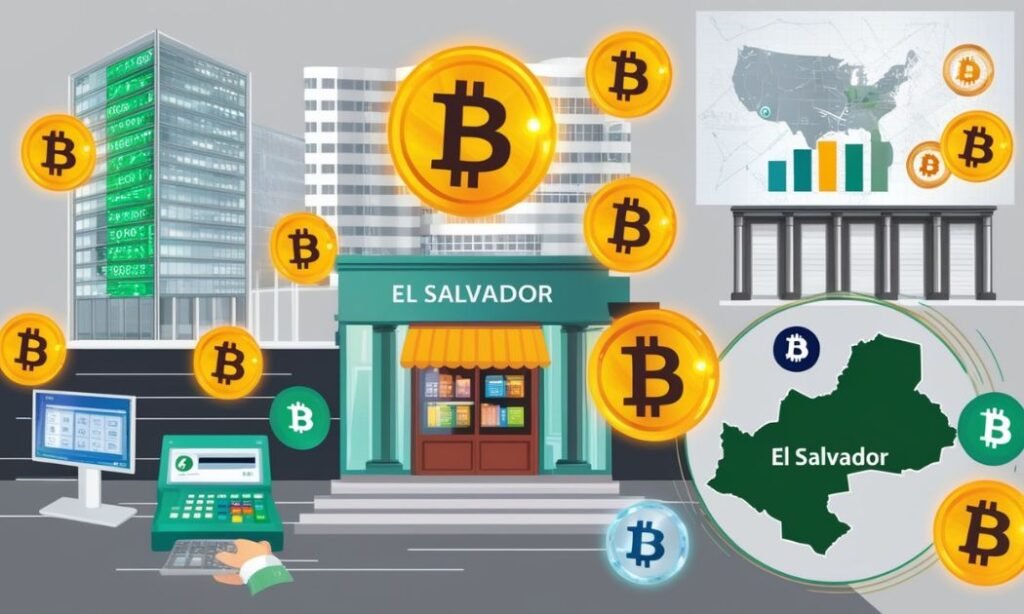Is Bitcoin At An All-Time High? It’s now early 2024 or evolving forward for me, and everyone in cryptocurrency looks pretty excited. It is December 2020 today, and I am sitting here theorizing about that question that must be torturing a lot of investors: Is Bitcoin at an all-time high?
Understanding Bitcoin’s Price History
To answer this question, we will have to take a step back and appreciate the second part of the question: How did the price of Bitcoin change in previous periods?
Since its birth ‘with the first’ cryptographic bills presented by the mesmerizing Nakanoto, BitCoin has experienced extensive price rises over the years, but with irritating price drops.
At first, Bitcoin was as good as worthless. The first recorded purchase of Bitcoin was two pizzas, which cost 10,000—today, that amount would be worth millions!
Thanks to these developments, the price of Bitcoin skyrocketed, people became millionaires, and the debate over the money that would emerge in the future began.
Key Milestones in Bitcoin’s Price Journey
2011: The first milestone – in June of 2011, the BTC price equals the USD rate. The Bitcoin quote is 1 dollar.
2013: BTC has claimed the $1,000 position for the first time this year.
2017: Bitcoin’s price sharply rose, reaching almost $20,000 by year’s end.
2020: After a few years of retracement, bitcoin price met the resistance at its previous all-time highs.
2021: The BTC price in November nearly hits an all-time high of $69000.
2022: Following this tremendous peak, a downward trend was observed in the crypto market, where Bitcoin crashed below $20,000.
The Current State of Bitcoin’s Price in 2024
Let’s answer the most interesting question: will Bitcoin surpass all previous values 2024?
At the beginning of 2024, it was indeed so. The BTC price has reached a new all-time high, well above the last peak in November 2021. The situation with cryptocurrencies has changed dramatically, and several reasons for this trend growth will be described in detail.
All the same, I may not be able to state the precise amount (for it is not a statistic). However, it is fair to say that Bitcoin is already out of the $69,000 territory as it was in 2021. Nevertheless, this new all-time high consolidates another level that Bitcoin and the entire crypto sphere have never achieved.
Factors Contributing to Bitcoin’s Price Increase
Bitcoin ETFs
The approval of spot Bitcoin exchange-traded funds (ETFs) in the US has been transformative. Such investments allow investors to invest in Bitcoin without holding or directly using the cryptocurrency, which leads to an increase in institutional investment.
Halving Anticipation
The latest excitement among investors is linked to the forthcoming Bitcoin halving, which is set to be done in 2024. Generally, it has been observed that there have been halvings coupled with increased sufficiency leading up to bullish runs in the market for Bitcoins in the past.
Mainstream Adoption
Bitcoin and other cryptocurrencies have become acceptable among many companies and other institutions, either to make payments or simply because they are valued more than fiat currency. This increased usage has stimulated demand and price increases.
Economic Uncertainty
Worldwide economic issues, such as the inflation standoff and wars, among other factors, have led some people to invest in Bitcoin as an alternative form of investment, unlike the standard systems seen in the world.
Technological Advancements
People have increasingly revolved around wallets, which are Networks of Lightning, Lightning networks, etc.
The Impact of Bitcoin ETFs
Bitcoin price growth was partly fueled by the expectation that spot Bitcoin ETFs would be introduced in the market, especially in the US.
This is a very lucrative tool because it allows investors to ride the price changes of Bitcoin without needing to buy and store the actual coins on these products’ ETFs. Since they were launched, the results have been above my expectations.
Due to the trouble-free nature of ETFs, Bitcoin users’ new economies are fast growing. This not only pumped the price up but also anchored Bitcoin’s position in conventional finance.
Companies such as BlackRock and Fidelity Advanced have products in the form of Bitcoin ETFs, which puts Bitcoin further within the reach of well-grounded investors.
The crypto world’s ability to attract users has pushed Bitcoin’s value to 2024.
The Significance of the Bitcoin Halving
Yet another contributing factor to Bitcoin’s bullishness is the hope of an approaching halving event.
For those who may be new here, let me describe having and why it matters.
Bitcoin halving is a hard-coded event in the protocols that occur approximately once every four years.
A halving occurs when the rewards for miners who mine new blocks on Bitcoin’s blockchain are halved. This mechanism is incorporated into the Bitcoin protocol to limit the number of new bitcoins in circulation.
Here’s why the halving is significant:
- Reduced Supply: Halving the mining reward decreases the number of new bitcoins that the network issues. Such a decrease in supply, even if only demand stays the same or grows, could cause a price rise.
- Increased Scarcity: It has been defined that the maximum sustainable unit of Bitcoin currency will be equal to 21 million BTC. Each halving only closes the limit, increasing the scarcity of Bitcoin every time.
- Historical Precedent: Whenever there have been preceding halving events, great bullish runs regarding bitcoin prices have always prevailed.
Mainstream Adoption and Its Effects
One of the most fascinating things I have witnessed these past few years is the increasing mainstream acceptance of Bitcoin, which has undoubtedly been one of the highlights. The phenomenon went from a narrow obsession of techno-junkies and libertarians to a worldwide trend.
Here are some ways I’ve seen Bitcoin adoption increase:
- Corporate Treasuries: Some companies with vision have gone the extra mile to keep Bitcoin in their corporate treasuries. This trend that began with MicroStrategy in 2020 has continued to grow.
- Payment Systems: Major payment processors like PayPal and Square (now Block) have implemented Bitcoin as part of their operational features, making it easier for the average people to buy, sell and hold the virtual currency.
- Retail Adoption: More physical and online shops are now accepting Bitcoin as a means of payment. Although it is still not very common relative to other forms of currency, the directionality of the trend is undoubtedly commendable.
- Institutional Interest: Other investors, besides ETFs, have been eyeing Bitcoin as an investable asset class. This includes hedge funds, family offices, and some pension funds.
- Nation-State Adoption: In a world first, El Salvador approved using Bitcoin as a currency in 2021. While this is still an outlier, it has led to conversations in other countries about how using Bitcoin in their economies can be helpful.
Bitcoin as a Store of Value
Some observers consider Bitcoin’s growing acceptance as a value store one of the most fascinating developments in its history.
Often referred to as “gold in a digital form,” Bitcoins have started to be used by people to preserve the value of their money over long periods, regardless of the prevailing economic conditions.
Here’s why this matters:
- Limited Supply: Limited Supply Machine: Central banks can print more note currency as they wish, but the supply of Bitcoin is limited to 21 million coins. This limitation has also enabled it to emerge as a valuable tool for savings.
- Inflation Hedge: When inflation rates are high, most people look to protect their wealth by investing in foreign currencies or commodities. Many have turned to Bitcoin for this purpose.
- Global Accessibility: Since Bitcoin does not need to pass through third-party agents’ borderlines, you can upload and transfer your assets to any part of the world without loss.
- Technological Security: The Bitcoin network’s many users and its transactional integrity, which is further enhanced via cryptography, make Bitcoin immune to censorship and even seizure, further preserving value.
The Role of Cryptocurrency Exchanges
Despite criticism aimed at these entities, cryptocurrency exchanges have undoubtedly contributed immensely to Bitcoin’s rally towards a new all-time high.
This is because, for most of them, these are the places where they buy, sell and exchange Bitcoin and other currencies.
If I walk down memory lane, I have witnessed the transition of crypto exchanges from small, unreliable services to big, playable financial markets.
Everyone is probably very familiar with Coinbase, Binance, or Kraken, and in terms of today’s pinch of salt, each trades billions of dollars daily.
The importance of exchanges in Bitcoin’s ecosystem cannot be overstated:
- Liquidity: Exchanges offer service replenishment on today’s Bitcoin market, allowing conversion from and into other currencies.
- Price Discovery: Exchange trading allows the establishment of market price: the constant buying and selling of bitcoin and its conversion help bring out its market price.
- Accessibility: Participants in Bitcoin and other cryptos have been allowed to do so in the easiest way in the past, using only a bank account or credit card to enable them to begin the process.
- Innovation: Currently, many exchanges provide more than just the marketplace – users can feature margin trading, margin lending, or, in some cases, even Bitcoin trading on futures.
The Future of Bitcoin: What Lies Ahead?
With Bitcoin making new all-time highs in 2024, many people are bemused about the prospects of the world’s first and most prominent cryptocurrency. While forecasting the price of Bitcoin a year from now is a notoriously tricky exercise (and I won’t try it here), certain factors that affect its cost can be identified:
- Regulatory Environment: The legal frame around digital currencies keeps changing. Well-defined guidelines favouring market participation may see further institutional involvement, while draconian ones may stifle expansion.
- Technological Advancements: Ongoing improvements to the Bitcoin network, such as the continued development of the Lightning Network for faster transactions, could make Bitcoin more practical for everyday transactions.
- Global Economic Conditions: Tech details: The increasing number of Lightning Network uses, helped by the extension of layer two protocols, may further integrate Bitcoin into day-to-day usage.
- Energy Concerns: Factors such as inflation, stock market performance, and other economic processes could also impact the price of Bitcoin.
- Competition: Even though bitcoin is the leading cryptocurrency as of this writing, the encroachment of other cryptocurrencies and CBDCs threatens the industry’s future growth.
- Cultural Acceptance: Younger generations fonder of digital assets seem to be coming of age, with Bitcoin adoption as a form of money, investment taking a new dimension
The Volatility Factor
As Bitcoin continues to attain new heights, volatility still factors highly in the cryptocurrency market. Excessive price fluctuations have characterized Bitcoin’s past price patterns, and this is bound to continue.
While tracking Bitcoin, I witnessed several ecstatic bull cycles that led to unprecedented cycles. The price is highly responsive to the news, government policies, and marketing trends, and even more so, to the tweets of key people in power. This ominous volatility is a feature and a bug for the Bitcoin market – it presents traders with chances but stresses out investors with long-term views.
Before going out and making a bet on Bitcoin, you should know what this volatility is and how to live with it. In the crypto market, the saying goes, do not put in what you cannot afford to lose is very real.
How to Buy and Hold Bitcoin
- Choose a Reputable Exchange: You must choose a reputed cryptocurrency exchange within your region. Some of the most common are Coinbase, Bitfinex, and Bittrex.
- Create an Account: Visit the cryptocurrency exchange of your choice, provide them with personal details, and open an account.
- Secure Your Account: If somebody else can access your account, consider enabling the two-factor authentication.
- Add Funds: To load money into the account, a bank account or credit card can be used or linked to other mediums of exchange.
- Buy Bitcoin: Now that you have deposited money in your account, you can order Bitcoin. Buying an entire bitcoin is unnecessary; you can trade in a series of its fractions.
- Consider a Wallet: For relatively long-term investment purposes, it would be prudent to move the Bitcoin acquired to one’s wallet, whether a hard or soft one.
The Bigger Picture: Bitcoin and the Future of Money
As different avenues for investment become available and the price of cryptocurrency goes higher and higher, it is wise to take a step back.
The adoption of the Bitcoin technology is not only about how high the price can go or how much investment can be made. It is about a new way of looking at money and how value can be transferred.
Bitcoin represents a concept that is the opposite of what banks traditionally are.
It provides a platform for direct payments from one person to another without involving a third party.
With many people across the globe remaining unbanked, the likes of Bitcoin and other cryptocurrencies promise an improvement for better and more efficient financial systems.
My Opinion
Overall, as we finish this account of Bitcoin’s new all-time price reached in 2024, there is no question that we are in the era of financial transformation. Indeed, the story of Bitcoin, invented in 2009, about 13 years back, has graduated from a little-known experiment to a recognized asset class.
The batch of approved Bitcoin ETFs, the excitement of the upcoming halving, mass adoption, and the belief in Bitcoin as a store of value all contributed to the impressive surge in BTC’s value.



